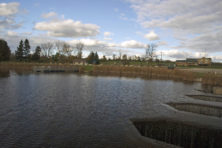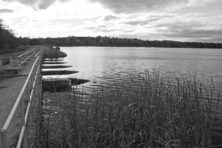What to do About Forestville Millpond
- Share
- Tweet
- Pin
- Share
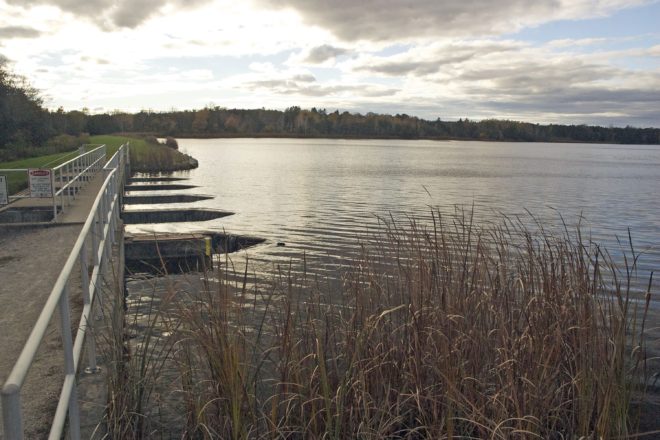
You can have a say about the future of the Forestville Millpond at a public meeting to be held at 6 pm on Nov. 9 at the Forestville Town Hall.
Twenty years ago the Door County Soil and Water Conservation Dept. released a report on the Forestville Millpond that was prompted by local community complaints about the water quality degradation of the pond that was diminishing the sport fishery and creating “conditions undesirable for swimming.”
At the time, “nonpoint sources of pollution and the proliferation of Eurasian water milfoil” were identified as the main culprits, with the 7,612 acres of cropped farmland identified as the major source of nutrients and sediment in the 72-acre shallow man-made millpond that stretches 1½ miles, fed by the Ahnapee River.
“Controlling agricultural nonpoint sources of pollution is considered a management option and is likely to have a long term impact on improving water quality,” the report said.
Twenty years on, Greg Coulthurst of the Door County Soil and Water Conservation Dept. said nonpoint pollution is pretty much under control.
“Looking at some of the nutrient management and compliance maps, we’re just about there in that watershed,” he said.
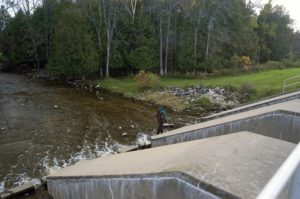
But a study done by the University of Wisconsin-Oshkosh has found that phosphorus levels have increased to three times what they were in the 1996 testing. Water turbidity is high and part of the reason is an abundance of carp stirring up sediments.
Dealing with nutrient loading, turbidity, nuisance aquatic vegetation, rough fish populations and oxygen depletion during the winter are issues to be considered for the rehabilitation of the pond.
At one time the millpond was known for a desirable mix of fish species, including northern pike, largemouth bass and panfish. But when the dam was reconstructed in 1982, bullhead and carp dominated so the piscicide rotenone was used to remove all the fish. From 1985 into the 1990s largemouth bass and northern pike were stocked in the pond, but the pond began suffering fish kills attributed to excess nutrients, and the DNR decided not to commit to any further stocking efforts.
DNR Fisheries Biologist Steve Hogler conducted a fish survey in 2008 that found carp dominating by far (300), followed by largemouth bass (57), black crappie (23), bluegill (19), yellow perch (10), white sucker (6), northern pike (4) and black bullhead (2).
The fish survey determined “that poor water quality continues to be an issue in the millpond.”
Hogler returned for another fish survey last May and found little had changed.
“Carp are still the dominant species,” he said.
“Getting rid of the carp is part of the solution,” Coulthurst said at a recent meeting of the county’s Land Conservation Committee.
Coulthurst said the public meeting on Nov. 9 is to hear what people would like to see done with the millpond. He has been working on a PowerPoint presentation based on the 1996 lake management study.
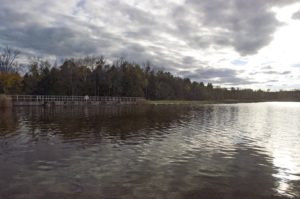
“Granted it’s 20 years old, but it still has a lot of valid data, and presumably it’s not going to change a lot,” he said.
There are 10 options to pursue, he said, including doing nothing. Here are the other nine:
- Dredge: For sediment removal, excavation for beach preparation or fisheries improvement. The extent of dredging is dependent on the desired outcome. This is considered a high-cost, high-impact alternative.
- Hand harvesting of nuisance water weeds. The pond is too shallow for mechanical harvesting and chemical harvesting is not a good idea for the waterfowl and amphibians using the water.
- Reduce agricultural runoff through best management practices. This was offered as a long-term option to improve the entire watershed.
- Develop a lake management district or voluntary lake association.
- Conduct an intensive educational effort. This was to be used in conjunction with options 3 and 4.
- Eliminate the millpond and return the Ahnapee to an uninterrupted stream. “What is now aquatic habitat would become terrestrial habitat,” the report states. This option would include the removal of the dam, which prevents sea lamprey from traveling upstream, so this option might require another form of sea lamprey control.
- A full-year draw down of water levels. At the time the DNR reported that this low-cost management option would allow bottom sediments to encrust and compact. Weed harvesting and/or dredging could take place at a reduced cost. The rough fish species could be reduced and the millpond could be restocked with select fish.
- A winter-only draw down. This would have impacts similar to option 7A, with the exception of compacting and encrusting of bottom sediments.
- Reconstruct bottom gates and spillway so they drain from the bottom to allow sediments through. This option was generated by comments offered at two public informational meetings when older community members recalled that short-term draw downs were performed on the millpond on the pre-1982 dam when lower gate planks were removed in order to discharge bottom sediments. It was determined at the time that this method only addresses sediment next to the dam and in the stream channel and not the entire body of water. While it just seems to be shifting the problem downstream, but it was the most popular option among the public at the time.

